Shopping for an automatic pool skimmer to remove leaves and other debris from your pool?
You’ve come to the right place.
In this 10-minute buying guide, we review and compare the best automatic pool skimmers in the market.
An automatic pool skimmer picks up large debris like leaves, acorns, and bugs. It complements the existing pool skimmer or pool filter. You can also use it alongside an automatic pool cleaner.
What's In This Buying Guide
Best Automatic Pool Skimmers
- 1. Best For Leafy Pools : PoolSkim Automatic Pool Skimmer & Cleaner
- 2. Best For Bugs : SkimmerMotion Automatic Pool Cleaner
- 3. Best For Intex Pools : INTEX Deluxe Wall Mount Automatic Swimming Pool Surface Skimmer
- 4. Cheapest Automatic Skimmers For In -Ground Pools : SkimDoctor 2.0 Pool Skimmer Basket
- 5. Best For Above Ground/In-Ground Pools : Pooldevil Pro Swimming Pool Skimmer
- 6. Best Solar Pool Skimmer : Instapark Betta Solar Powered Pool Skimmer BEST SOLAR POOL
- 7. Best For Leaves : BLASTER Cordless Pool Leaf Skimmer
- 8. Best Leaf Canister For Suction Cleaners : Zodiac Automatic Cyclonic Leaf Catcher
- 9. Best Wall-mounted : Leaf Bone Above Ground Pool Leaf Skimmer Kit
Best Automatic Pool Skimmers: Comparison
Best Automatic Pool Skimmers: Reviews
Unlike some automatic skimmers, the PoolSkim skimmer stays fixed at one spot. But don’t worry. It still manages to pick up debris from all corners of the pool using a simple but brilliant scientific principle.
It connects to your pool’s return line, where the water flows back into the pool. The force of the water creates a gentle but powerful venturi effect that sucks water from the rest of the pool.
As the water flows through the skimmer, it carries along with its leaves, bugs, and whatever debris is floating in the water.
The PoolSkim skimmer has a large debris bag attached that traps all the debris. It’s not a fine bag, so it’s not very effective at catching sand, silt, and other fine particles.
Some customers recommend putting a sock around the bag to get better debris removal. But even as it is, it still catches a lot of stuff.
If you struggle with leaves, bugs, or pet hair in your pool, this skimmer will save you loads of time. Just hook it up to your return line and watch all the debris move towards the skimmer like magic.
If you have a large pool and multiple return lines, you can even hook up two or three of them for better debris removal.
The debris bag is a mesh so you can easily see when it’s full. You can then unclip it from the skimmer, remove the debris and clip it back on. You can leave it in the pool 24/7 to keep it clean.
Note that PoolSkim connects only to a 1.5” threaded return line. If you have a different size of the type of return line, you’ll need an adapter.
Pros
- Easy to setup.
- Catches most of the floating debris in the pool.
- Eases the burden on your pool skimmer and filter.
- Large debris bag.
- Good value for money.
Cons
- Doesn’t catch fine debris.
The SkimmerMotion automatic pool cleaner complements your existing automatic pool vacuum. However, it only works with suction pool vacuums.
If you have a robotic or pressure pool cleaner, this is not for you.
The SkimmerMotion comes with its own hose that has a T-adapter at the end. Attach this adapter into your pool vacuum and then connect the vacuum lead hose into the spare port on the adapter.
Your pool pump will now provide suction power to two cleaners. For best results, the manufacturer recommends you have a pool pump with the power of at least 1 HP.
Once you’ve connected the skimmer, put the vacuum in the water, as usual, making sure to blead air out of the main vacuum hose and the skimmer hose.
Connect the skimmer hose to the top of the skimmer and let it float on the water. As the vacuum moves at the bottom of the pool, the SkimmerMotion moves along with it on the surface.
As it moves, it sucks in debris-leaden water through the onboard filter.
As many customers have noted, the SkimmerMotion excels best at removing bugs from water. But it struggled with leaves and other large debris.
It’s designed to catch debris smaller than 0.8”. So large leaves are left on the water for hand skimming or to be removed by the pool skimmer.
If you struggle with leaves in your pool, we don’t recommend the SkimmerMotion. But if your biggest problem is bugs and other small debris like pet hair, it works great.
It does take a while to set it up and make sure it’s working right (you may need to adjust pool suction), but once it’s up and running, it works like a charm.
Note: If you don’t have a suction pool vacuum, you can connect SkimmerMotion to your pool’s dedicated suction line. The skimmer will float on the water, but it won’t move around. So it may not remove all the debris floating in the water.
Pros
- Very effective at removing bugs and other small debris.
- Affordable.
- Reduces burden on pool skimmer and filter.
Cons
- Doesn’t remove leaves.
- Only works with certain pool vacuums.
#3
BEST FOR INTEX POOLS
If you have an Intex above ground pool, we recommend the Intex Deluxe wall mount skimmer. You can also install it on most other non-Intex above ground pools, including Coleman and Bestway.
The skimmer attaches to the inflatable ring or the metal frame at the top of the pool. Once installed, the top of the skimmer should be just below the water surface (do not weigh the skimmer down with anything – it’s supposed to float near the top of the pool).
The skimmer is designed to create a whirlpool motion that sucks debris down into the strainer basket. It catches leaves and other debris before they sink to the bottom of the pool, where they are harder to remove.
Make sure your pool pump is powerful enough. Intex recommends having a pump with a flow rate of at least 800 GPH.
When the basket is full, it’s easy to remove and clean.
The Intex skimmer is cheap enough that it won’t hurt your pocket that much to get two of them if you have a large above ground pool.
Pros
- Removes most of the floating debris from the water.
- Easy to install.
- Strainer basket is easy to remove and clean.
- Inexpensive.
Cons
- Only for above ground pools.
- Mount feels a bit flimsy.
#4
CHEAPEST AUTOMATIC SKIMMERS FOR IN -GROUND POOLS
If you don’t have a lot of money to spend on an automatic skimmer for your in-ground pool, the SkimDoctor 2.0 works just as well as other pricier skimmers.
The design is quite different, though. It doesn’t float on the pool, nor does it attach to the pool vacuum. Instead, it attaches to the existing skimmer basket.
Unlike other pool skimmers, the SkimDoctor’s main goal is not to catch debris. The skimmer basket retains its job.
Rather, it increases how quickly the skimmer removes debris. It increases the suction, which pulls in water, and thus debris, at a faster rate.
You’ll notice that the pool stays cleaner since any leaves and debris that fall into the pool get sucked away almost immediately. Also, the skimmer is better able to pull debris from all areas of the pool, even those farthest from it.
Because the SkimDoctor removes debris faster, you can run your pool for less time, which will reduce your power bill.
Another benefit of the SkimDoctor is that you never have to dunk your hand in the water when removing the skimmer basket. Just pull the top part of the SkimDoctor, and the basket comes out with it.
The skimmer comes with a sock that you wrap around the skimmer basket. This allows the basket to trap finer debris that would normally go through the basket and to the pool filter.
This reduces the burden on your pool filter.
As for issues, the main one is cleaning the skimmer basket. It’s tedious to detach the SkimDoctor to remove debris from the basket.
Pros
- Inexpensive.
- Removes leaves and debris quicker.
- Works with all skimmer baskets(comes with a spare ring to fit larger baskets).
- Comes with a sock to filter out fine debris.
Cons
- It’s difficult to detach it from the skimmer basket for cleaning.
- Average build quality – some of the parts break after 1 or 2 seasons.
#5
BEST FOR ABOVE GROUND/IN-GROUND POOLS
The Pooldevil Pro attaches to the pressure side of your pool – the line bringing back water into the pool. So if you have a suction-side pool vacuum, you can keep using it alongside the skimmer.
It uses the force of water to create a venturi effect that sucks debris into an attached filter bag.
It creates suction that’s powerful enough to pull in debris from all over the pool. So even though it doesn’t move around like other automatic skimmers, it still manages to get almost all the debris floating in the pool.
The Pooldevil Pro skimmer is well made; much better quality than most of the automatic skimmers you’ll find. You can expect to use it for several years.
You can use it in either above ground or an in-ground pool. If your pool has multiple return ports, you may need to shut off some of the ports to maximize pressure.
The skimmer also has a pressure adjustment ring.
Like most automatic pool skimmers, there’s some trial and error involved to get the skimmer to work well.
Here’s an interesting tip from many customers: instead of ordering a new filter sock (replacements are hard to find anyway), you can buy a pair of knee-high stockings. They work just as well and are much cheaper.
Pros
- Reduces wear on your pool skimmer and filter.
- Easy and quick to set up.
- Long-lasting.
- Inexpensive.
Cons
- Customer service is hard to reach in case of a problem.
Instapark Betta is a solar-powered automatic pool cleaner that patrols your pool, picking up surface debris like leaves, dust, bugs, and pollen.
Because it is solar-powered, your pool pump doesn’t need to be on for it to work, nor do you need to connect it to an electrical outlet.
It runs all day long and collects enough power in the internal battery to run for most of the night, even on cloudy days.
With the Instapark Betta running, you’ll rarely need to hand-skim, and your pool filter lasts longer. Your pool also stays cleaner in between vacuuming sessions.
The large basket holds plenty of debris, reducing how often you need to empty it. Once it’s full, you don’t need to take the skimmer out of the water. Simply dock the skimmer using the included remote control, and unlatch the basket from the skimmer.
The basket is easy to remove without any of the debris falling back into the water.
Unlike most skimmers, the Instapark Betta traps everything in its fine basket. This includes large debris like leaves, twigs and bugs, as well as smaller debris like sand and pollen.
The Instapark Betta moves over the water using a thruster that’s driven by a brushless motor. This, plus the built-in ultrasonic radar sensors, allow the skimmer to effortlessly navigate to every corner of the pool without getting stuck.
There’s also the option to steer it manually using a remote control. This is handy if you want to spot clean a particular area, though most pool owners found that it’s not necessary. The skimmer does a great job covering every inch of the pool surface.
The Instapark Betta build quality is really good. It is designed to withstand the elements for several seasons without breaking down. The body is UV-resistant and the high-efficiency solar panels on top are covered by wear-resistant material to increase their durability.
For added peace of mind, the manufacturer provides a 1-year warranty.
The only issue with the Instapark Betta solar skimmer is the price. It is much more expensive than other automatic pool skimmers. It costs about as much as a basic robotic pool cleaner.
But we think it’s worth it, and many pool owners say so as well. It makes pool maintenance so much easier.
Update: There is a new Betta! The Instapark Betta 2 has dual motors that improve maneuverability, cleaning performance and energy efficiency. The motors are designed to be resistant to salt and chlorine, making them more reliable and longer lasting.
Pros
- The fine filter picks up all floating debris, including sand and algae.
- Solar-powered - doesn't rely on pool pump nor does it need an electrical cable.
- Built-in sensors keep it from getting stuck.
- Durable build quality.
- Easy to remove filter basket.
- Remote control option for spot cleaning.
Cons
- Expensive compared to other automatic pool skimmers.
If your pool is always strewn with leaves from nearby trees, the Pool Blaster is the best automatic skimmer.
It’s more of a semi-automatic skimmer. Unlike other skimmers, you don’t leave it in the pool to do it’s thing. Instead, you attach it to a telescopic pool pole (not included) and then dip it into the pool.
Unlike manual skimmers, you don’t have to skim the leaves yourself. The Pool Blaster vacuums leaves and other large debris into the large bag that you attach to it.
The Pool Blaster doesn’t pick up debris from just the surface of the pool like other skimmers. You can also pick up leaves and debris from the floor of the pool.
The debris bag holds lots of leaves, so you don’t have to empty it midway through the cleaning. On the downside, it’s not fine enough to catch dirt, sand and other fine debris.
The Pool Blaster runs off 8 AA batteries. Many users have mentioned that the battery case is leaky, which damages the batteries and reduces battery life.
Some users have found a way to waterproof the battery case using grease or silicone sealant. Others recommend removing the batteries when you finish vacuuming and leaving the battery compartment to air dry before storing the vacuum.
Overall, the Pool Blaster is the best skimmer for keeping your pool leaf-free. It does require a more hands-on involvement compared to fully automatic skimmers, but it’s worth it. It’s also much cheaper than vacuum and suction cleaners that require hoses to run.
Pros
- Great price.
- Picks up leaves from the surface and the bottom of the pool.
- Easy to operate.
- No installation required.
Cons
- Doesn't catch fine debris.
- Leaky battery case.
- Not fully automatic.
#8
BEST LEAF CANISTER FOR SUCTION CLEANERS
Automatic suction or vacuum cleaners do a good job cleaning the pool. But, unlike robotic and pressure cleaners, they direct all the debris they collect to the pool filter.
This means you have to clean the pool filter more frequently, and replace it sooner.
The Zodiac leaf catcher is designed to solve this problem. You install it along the cleaner hose leading to the pool outlet, and it captures leaves and other large debris before it gets to the filter.
Without all the large leaves clogging it, the pool filter needs less frequent cleaning and it’ll last longer.
The Zodiac leaf catcher uses cyclonic action to capture debris as water passes through it. It doesn’t affect the suction power of the cleaner.
Installing the leaf catcher is easy and quick. Simply disconnect two sections of the cleaner hose, and reconnect each section to the leaf catcher.
One issue that pool owners encountered was the leaf catcher floating to the surface of the pool, causing the cyclonic action to stop. To solve this, you can attach weights (e.g. a couple small bottles filled with gravel) to the leaf catcher to keep it down.
Remember to empty the leaf catcher regularly. If it’s full, it will reduce the cleaner’s suction and affect its cleaning performance.
Overall, the Zodiac leaf catcher is a great choice if you want to keep your pool filter from constantly clogging with debris from the automatic vacuum cleaner. It’s compatible with most automatic suction cleaners.
Pros
- Easy to set up.
- Keeps the pool filter from clogging.
- Doesn't affect suction power.
- Compatible with most automatic suction pool cleaners.
Cons
- You may need to weight it down to keep it from floating.
- Doesn't catch fine debris.
The Leaf Bone pool leaf skimmer uses the skimmer net that you already have to catch leaves and other debris.
Leaf Bone is just a clip that holds your net in place against the pool wall. You mount the Leaf Bone on the top rail of your above ground pool, and then attach any skimmer net to it.
You’ll need to drill two small holes on the railing to install the Leaf Bone. The mounting bracket and screws are provided.
You can also install Leaf Bone in an in-ground swimming pool. In that case, drill two holes on the deck of the pool to mount the Leaf Bone clip.
The advantage of using Leaf Bone is that you can attach whichever skimmer net you want. You can use the one you already have (just the net minus the pool pole) or get a new one.
You can buy a regular leaf net or get a fine net that can trap sand and silt. The manufacturer says Leaf Bone can accommodate nets as wide as 20”.
To get the best results, install the clip near the return line of the pool. That way, the net catches most of the debris that’s flowing towards the filter.
It’ll not only reduce the amount of debris your filter has to deal with, it also drastically reduces how much time you spend skimming the pool.
Pros
- Affordable - cheaper than most automatic pool skimmers.
- Compatible with most pool skimmer nets.
- Doesn't connect to the pool filter or pump.
- Can be installed in in-ground or above ground pools.
Cons
- Since it stays in one spot, it may not catch all the debris that falls into the pool.
Pool Skimmer Buying Guide

Since there is no shortage of automatic pool cleaners on the market, picking one can be difficult. You should carefully assess the features and performance of various models before settling on one that suits your needs the most.
Here is a comprehensive pool skimmer buying guide to help you choose the right model.
What is a Pool Skimmer and How Does it Work?
A pool skimmer is designed to capture larger debris floating on the surface of the pool water. It can be a rectangular opening located on the side of the pool or an automatic device that swims across the pool’s surface to trap visible pollutants like leaves, nuts, bugs, hair, etc.
It is an essential component for any swimming pool’s maintenance. Without a skimmer, it is impossible to remove the chemicals and debris from the water, increasing the risk of cloudiness and algal growth.
A good pool brush may help you deal with that, while pool testing strips are a must-have for maintaining pool chemical balance.
All types of pool skimmers, except the manual ones, use the power of suction to pull debris towards them. Their job is to trap the various floating debris before it can sink to the bottom.
This suction pulls the water inside the skimmer, where there is a filter bag or basket that separates the pollutants from the water, allowing clean water to pass through.
How they generate this suction varies from one skimmer to the other.
Automatic skimmers use solar energy or battery to power the motor-driven propellers or paddles that create the suction. Others depend on the pool pump to generate suction. They attach to the pool’s outlet or inlet and use the force of water to vacuum debris from the pool.
Types of Pool Skimmers
Manual skimmers: These are the most basic types of skimmers. A manual skimmer is essentially a net at the end of a long pole. You use it to collect leaves and other floating debris from the pool manually.
Automatic skimmers: These are the skimmers we’ve reviewed above. They work automatically, collecting debris usually using suction. Some skimmers work from a fixed point in the pool while others roam the pool surface.
Solar-powered skimmers: These are types of automatic skimmers. They are fully self-contained, meaning you don’t need to connect them to your pool. A solar skimmer has an internal pump that sucks water and a debris bag or basket that collects debris. Though convenient, solar-powered skimmers are pricey.
Wall-mount skimmers: These are mostly designed for above ground pools. The skimmer mounts at the top of the pool and sucks in debris as the water floats past it.
In-ground pools are typically designed with an integrated skimmer. But in many cases, it’s not enough to keep the pool clean, especially if you struggle with bugs or leaves.
Getting one of the above skimmers will complement your main skimmer.
What Makes a Good Automatic Pool Skimmer?
Here’s what to look for when shopping for a good automatic pool skimmer.
Performance: How well does the skimmer work at picking up leaves and debris. Check out what customers have to say about it before you buy. A good automatic pool skimmer should leave little to no debris floating in the pool.
Build quality: The whole point of an automatic pool skimmer is to make pool maintenance easier. If it requires constant repairs, it’s not worth it. A good automatic pool skimmer should last at least a couple of seasons for the cheaper ones and a few years for premium models.
Easy to set up: Look for a skimmer that you can set up in less than 15 minutes. If it requires complicated connections and adjustments, you can get something that’s easier to install and works just as well.
Full pool coverage: Whether the skimmer stays fixed at one point or moves around on the pool, it should remove all the debris floating in the water. If the skimmer only removes the debris around it, it won’t help keep your pool clean.
Easy to maintain: The only maintenance you should do is emptying and cleaning the filter bag.
How to Use a Pool Skimmer?
A pool skimmer has a simple job: collect visible debris from the water before it can sink to the bottom. Using a pool skimmer greatly depends upon the type of skimmer you have.
All different types have some sort of filter bag or basket incorporated into that not only captures the debris but also prevents it from going back into the water.
Let’s look at how you should use each type of pool skimmer.
Manual Skimmer
Like we mentioned earlier, a manual skimmer is the most basic type of pool skimmer. It features a long pole with a net bag in the end. You submerge the net into the pool and use the pole to move it to capture the various debris floating on the surface. Once everything is captured, you pull it out, empty the net, and discard the captured debris.
Automatic Pool Skimmer
As the name suggests, an automatic pool skimmer works automatically without needing much human assistance. It either attaches to a side of the pool or swims across its surface to collect the debris. All you have to do is connect it to a power source, turn it on and set it to work. Once the pool skimmer collects the gunk, all you have to do is take out the filter cartridge and empty it for the next time.
Solar-powered Skimmer
Solar-powered skimmers require even less human assistance than automatic pool skimmers. They are powered by solar-powered batteries, so there is no need to plug them to a power source. They are pretty self-sufficient in their operation; they only require you to turn them on, and they do the rest themselves.
Wall mount skimmers
These skimmers are usually used for above-ground pools. Since such pools don’t have an integrated pool filtration system, you have to install a pool skimmer on the wall. There are special skimmer outlets in most above-ground pools where you have to connect the skimmer to collect debris.
Similarly, in-ground pools have built-in skimmers on the side. They use the pool pump’s suction power to pull in the debris. With these, you don’t have to do much except empty the skimmer basket when it is full.
Cleaning Your Pool Skimmer
Keeping your pool skimmer clean is important. A dirty skimmer will remove less debris from the water, and in some cases, the debris can float back into the pool.
When To Clean Your Pool Skimmer
For your main pool skimmer, clean it at least once a week. Remove the basket, empty it, and hose it down to get all the debris out.
For an automatic pool skimmer, clean it when the debris bag or tray gets full. This may be once a day or even once every few hours depending on the season as well as the pool environment.
How to Clean Your Pool Skimmer
For the main pool skimmer, just reach into the skimmer and pull out the basket. Empty it of all debris and then hose it down to give it a thorough clean before putting it back in.
For an automatic pool skimmer, remove the debris bag and empty all the debris. Hose it down or wash it to remove all debris.
Winterizing Your Pool Skimmer
First, lower the pool water level to an inch below the skimmer. You can do this by setting the filter valve to backwash, drain, or waste.
Then drain the skimmer line by opening the skimmer valve and letting all the water drain. You may also need to blow out the pool skimmer pipe.
Once the skimmer is empty, plug it closed to prevent water from getting inside.
If you have a wall-mounted skimmer in your above ground pool, you can just remove it when closing the pool.
Same goes for automatic pool skimmers. Disconnect the skimmer and take it out of the pool. Clean it and store it somewhere safe until next season.
Conclusion
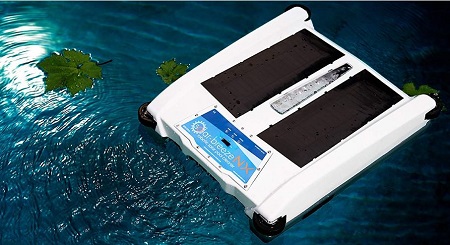
There’s no shortage of options when it comes to automatic pool skimmers. From solar-powered models to simple wall-mounted skimmers, there’s something for every type of pool and budget.
Regardless of which automatic pool skimmer you settle for, it will be a huge upgrade from wasting your precious weekends wrestling with a pole and net.
FAQs
Which is the best solar pool skimmer?
Previously, the Solar Breeze NX2 was the best solar powered pool skimmer, but it’s been discontinued. The best solar pool skimmer currently is the Instapark Betta Solar Powered Pool Skimmer.
It picks up large and fine debris, stores enough power to keep working at night, and even has radar sensors to avoid obstacles.
How does a solar pool skimmer work?
A solar pool skimmer captures solar energy using solar panels on its surface, and stores it in an internal battery. The battery powers a motor that drives propellers or paddles that suck water through the skimmer to capture debris and move the skimmer over the pool surface.
Is an automatic pool skimmer worth it?
It depends on your particular situation. If your pool doesn’t get a lot of debris or you use a pool cover, you likely don’t need a pool skimmer. Your existing pool skimmer and pool filter will take care of the little debris that gets into the water.
If, on the other hand, you struggle with leaves, bugs and other debris in your pool, an automatic pool skimmer will make pool maintenance easier. It also takes pressure off your skimmer and filter, which reduces how often you clean them and increases their lifespan.
WHEN TO CLEAN YOUR POOL SKIMMER
For your main pool skimmer, clean it at least once a week. Remove the basket, empty it, and hose it down to get all the debris out.
For an automatic pool skimmer, clean it when the debris bag or tray gets full. This may be once a day or even once every few hours depending on the season as well as the pool environment.
Do I need to vacuum/clean my pool if I have an automatic skimmer?
Automatic skimmers keep your pool cleaner, but you still need to regularly vacuum your pool. You can use a manual vacuum or, more conveniently, an automatic cleaner such as a robotic pool cleaner.
That’s because most pool skimmers only catch the debris that’s floating on the surface of the pool. They don’t touch whatever has sunk to the bottom. Furthermore, they don’t clean any gunk and algae stuck on the pool floor and walls

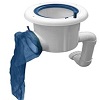

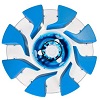

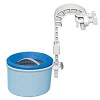
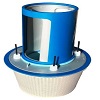

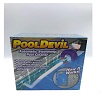

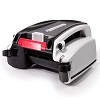
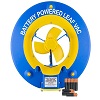
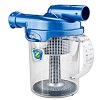
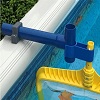

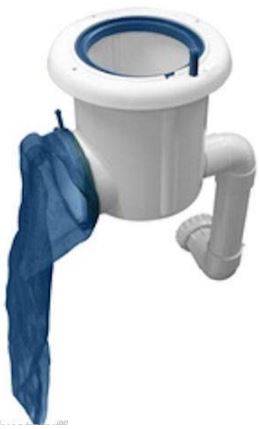
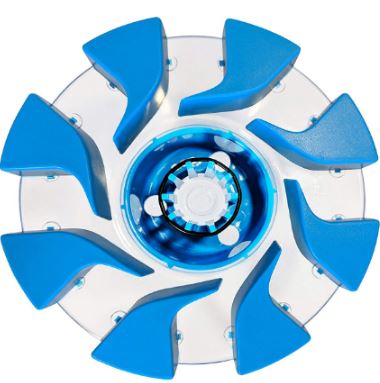
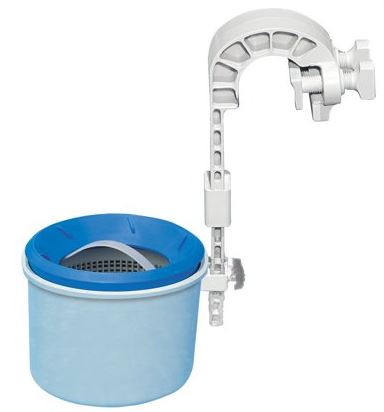
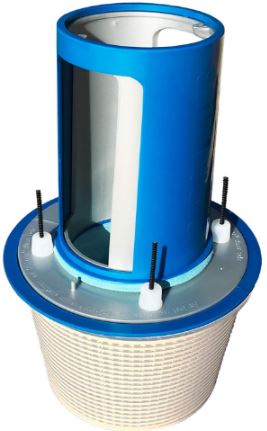
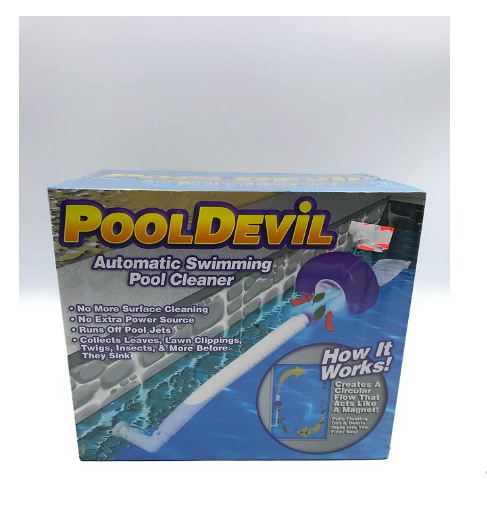
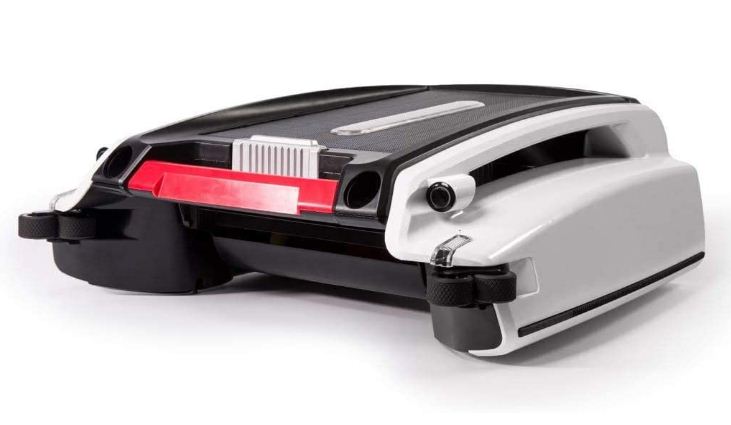
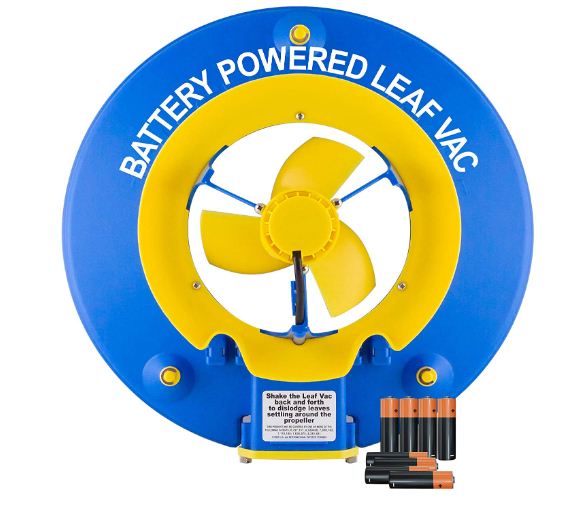
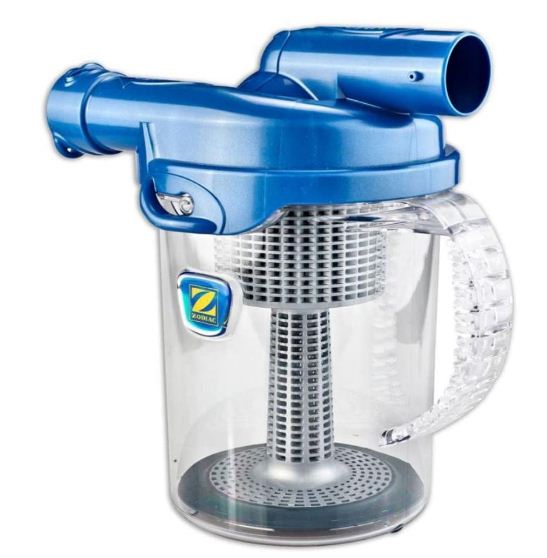
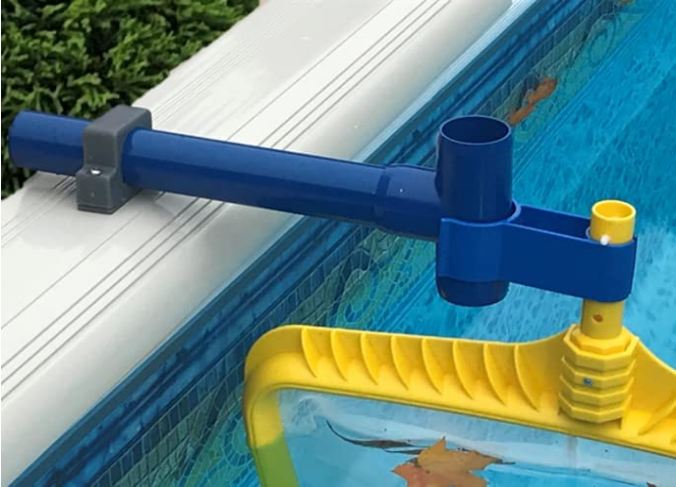
Furthermore, an above ground pool is frequently a safer option. A lot of people want an above ground pool that will endure them several summers, but they frequently don’t understand where to begin looking.